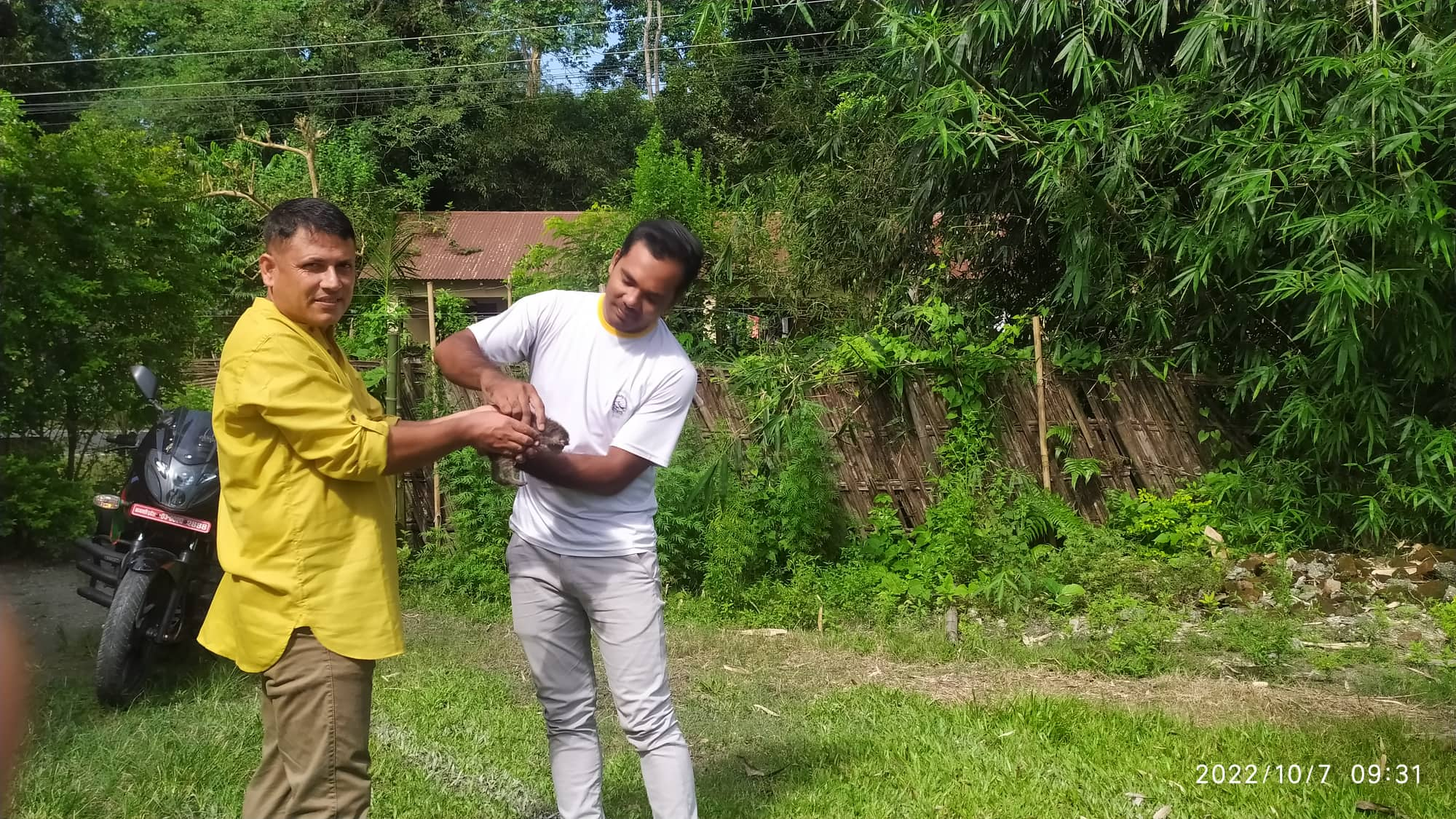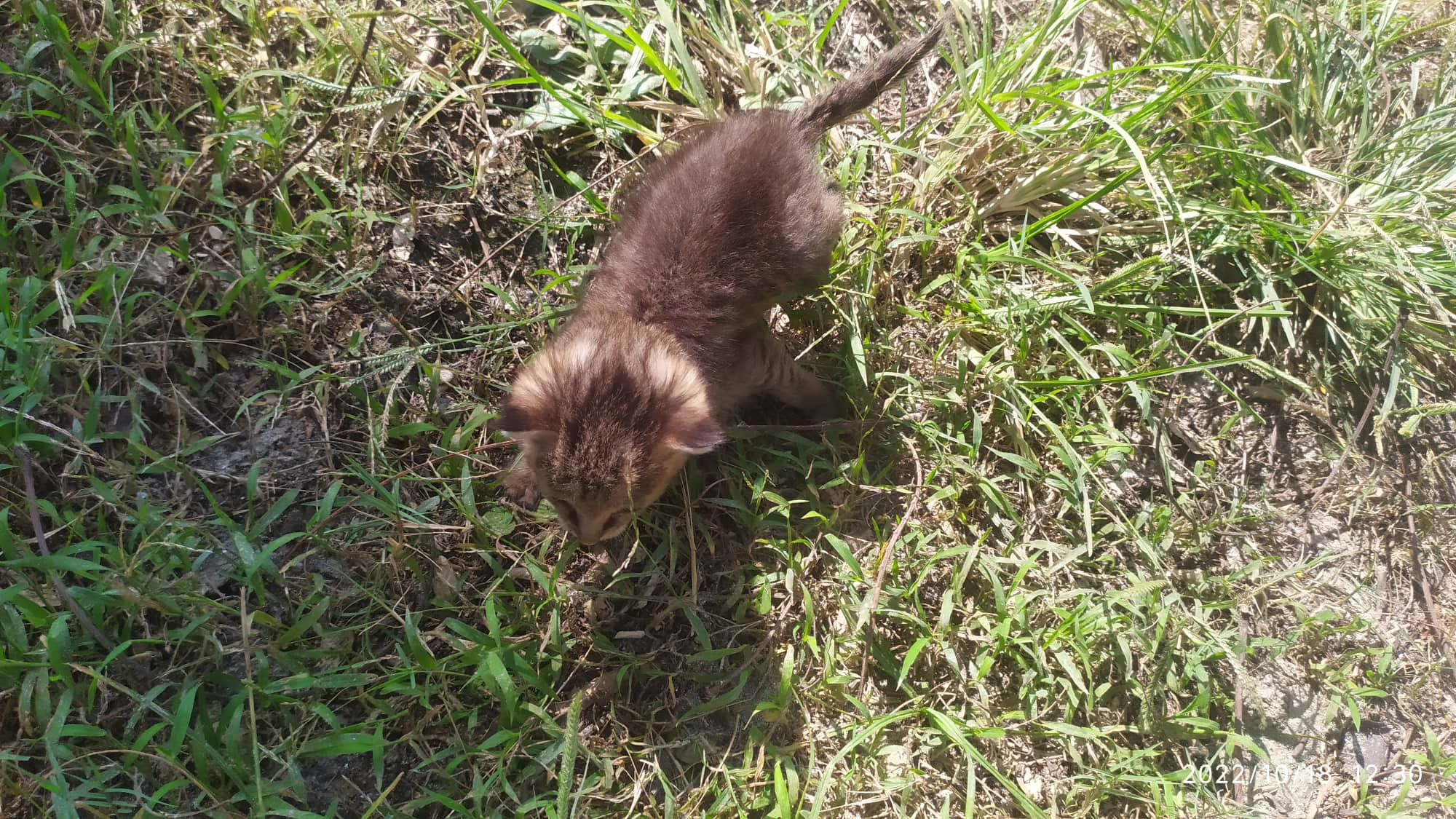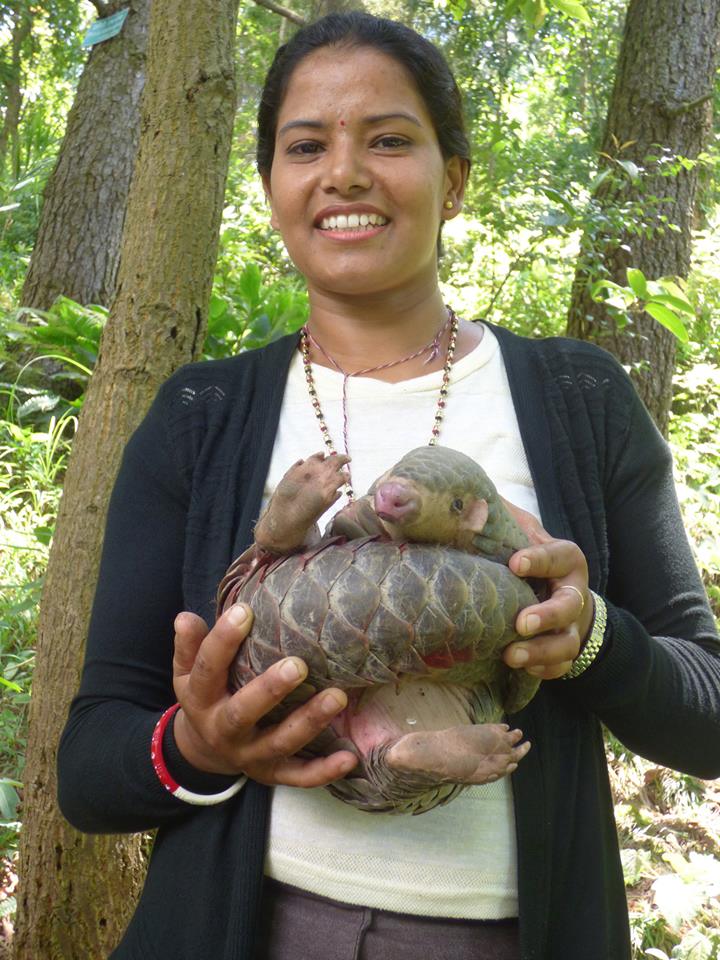Fishing the Fishing Cat in Koshi
Need for conservation education, rescue/rehabilitation and capacity building program for the frontliners
By Prativa Kaspal

Chaktra Timsina, Local conservationist, giving Fishing cat to NTNC staff
The vulnerable Fishing cats are in a sharp decline in South East Asia with a poorly known distribution, accelerated up by the loss, and deterioration of wetland habitats and poaching is pushing the species to the brink of extinction. The increasing human population is escalating demands on natural resources with no exception to wetland resources for new farmland and aquaculture.
Though Nepal is renowned for conserving mega faunas however, it has very limited interventions to elusive species like Fishing cats and other wetland-dependent wildlife which is mainly because the government’s conservation priorities focused on mega charismatic species, particularly within the protected area network. Recent incidents show that road kill or road injury/ accidental/intentional deaths of Fishing cats are increasing in Nepal. The possible reason could be the twin threats of direct trapping, snaring, persecution and wetland habitat destruction. The species has been little studied and details of its habitat requirements and general ecology are lacking.
In Nepal, it is common to see people struggling to get the correct information and skills to respond to the cats including fishing cats and in many cases ending up with mal-practices, even though they intend to help during rescue and rehabilitation activities. Frontline conservation communities require practical information about the Fishing cat, ways to respond, handle, rescue and rehabilitation.
With reference to the recent incident, our local conservationist named Mr Chakra Timsina shared the news of a Fishing cat kitten rescue on 5 th October 2022 in Khuniadhar, about 2 km apart from his village. As per him, local people were on the way to throw the kitten thinking this cat would harm their livestock if they grow in their village area. He looked after the tiny kitten for 2 days. The kitten was so small could be just 3-4 days old with just an eye open at that time. With no idea how to care for the kitten, he called out for help from concerned wildlife researchers and finally handed it to the Koshi Tappu Wildlife Reserve and National Trust for Nature Conservation office which is close to his village for its further care. The cat was doing fine, playing on the ground for some days but unfortunately, died after a week or so. This case was only of Fishing cats but many other wildlife could have the same faith. The real problem arises when seriously injured or pregnant wildlife including Fishing cat has to be rescued that are not in the position of immediate release in their natural habitat.

Fishing cat inside KTWR/NTNC care
This incident is a representative case and reveals that just having the laws in place is insufficient to save the wild cat. We need practical information on the safer handling of the elusive cats, the place of delivery of the wildlife species, the best available foods, feeding techniques, basic first aid and treatment guidelines and captive care skills. Further, it is crucial to disseminate such information in local languages/ dialects to frontline communities.
Every single individual Fishing cat matters as they are highly threatened, and the wild population is declining across their range. There are growing research, concerns, and efforts to save the Fishing cat, which is encouraging, but the death examples that our efforts are not adequate enough for the conservation of the felids. This calls out for the need to equip the frontline communities with the knowledge and capacity to help species. Nepal’s local communities are very receptive and positive towards species conservation providing the proper incentives for them. Equally, the science of proper rescue and rehabilitation and the enhanced capacity could help save much wildlife. In addition to the research and action plans, appropriate first aid and short-term care in captivity are also key to a successful conservation outcome.


